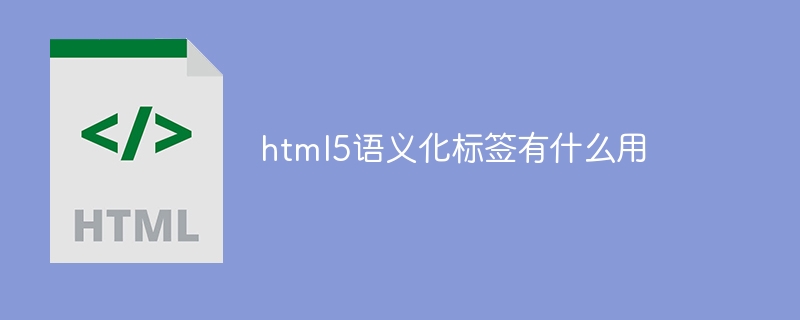
The role of HTML5 semantic tags: Enhance readability: Make web pages easier to understand and browse. Improve accessibility: Help screen readers understand web content. Improve maintainability: A clear structure facilitates code organization and maintenance. Search engine optimization: Provide useful information to search engines and improve search rankings. Improve user experience: intuitive and efficient interactive experience.

The role of HTML5 semantic tags
HTML5 semantic tags are designed to improve the readability and accessibility of web pages. Accessibility and maintainability. They achieve these goals by providing semantic meaning to the content of a web page.
Specifically, the role of HTML5 semantic tags is reflected in the following aspects:
In short, HTML5 semantic tags provide web developers with powerful tools, allowing them to create web pages that are more readable, accessible, maintainable, and user-friendly.
The above is the detailed content of What is the use of html5 semantic tags?. For more information, please follow other related articles on the PHP Chinese website!




